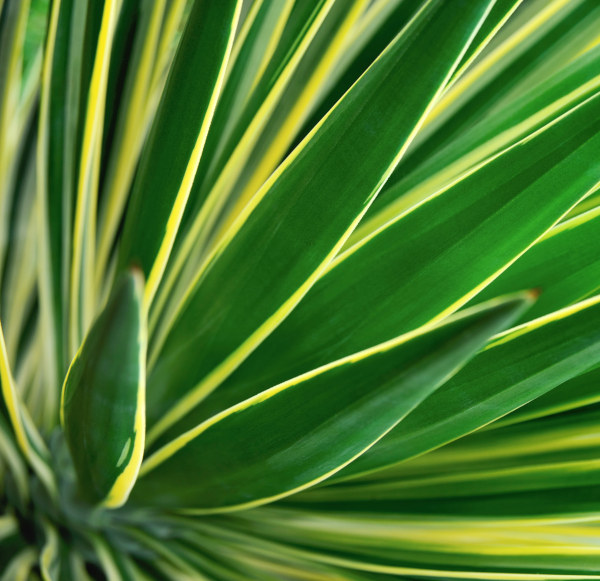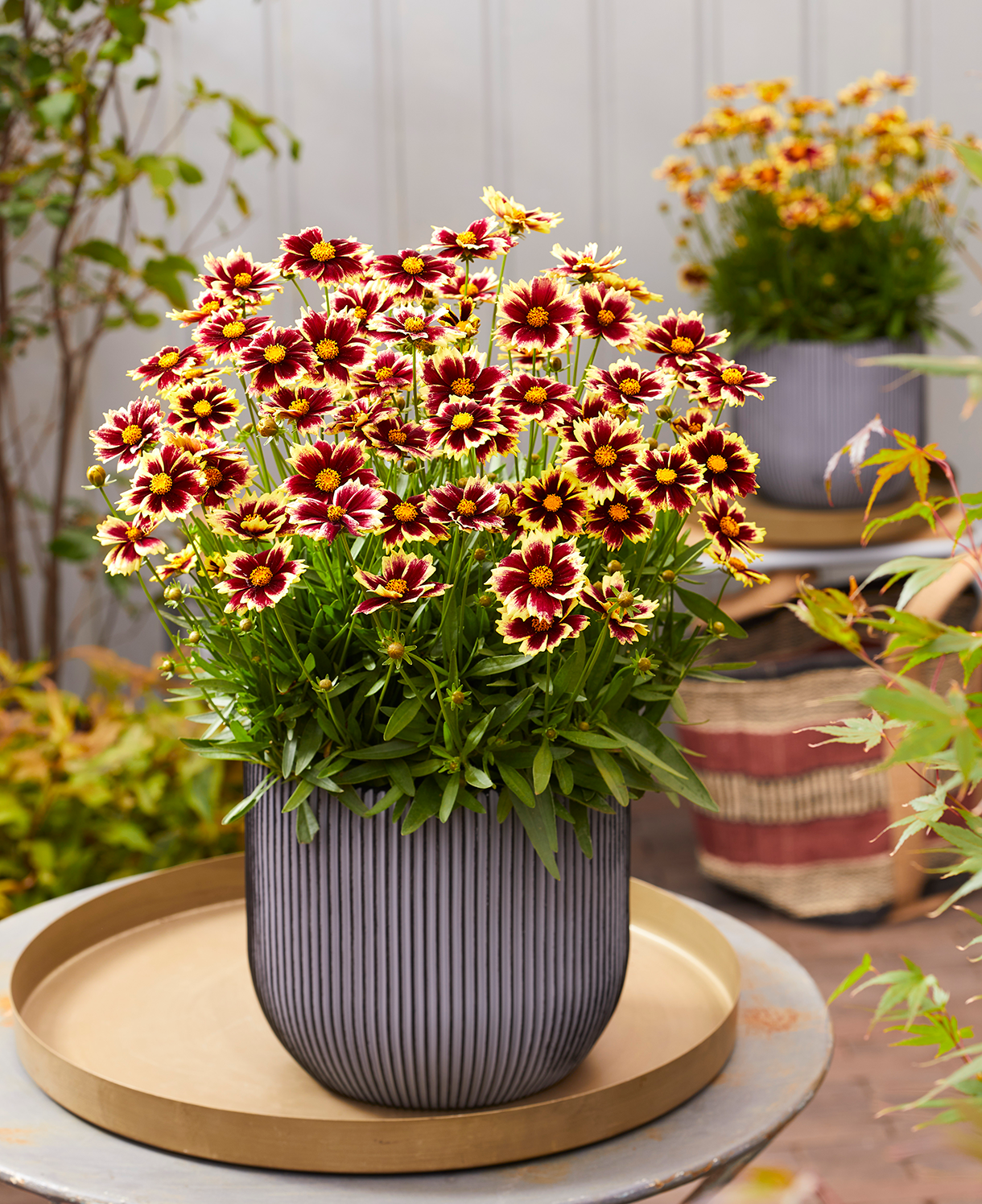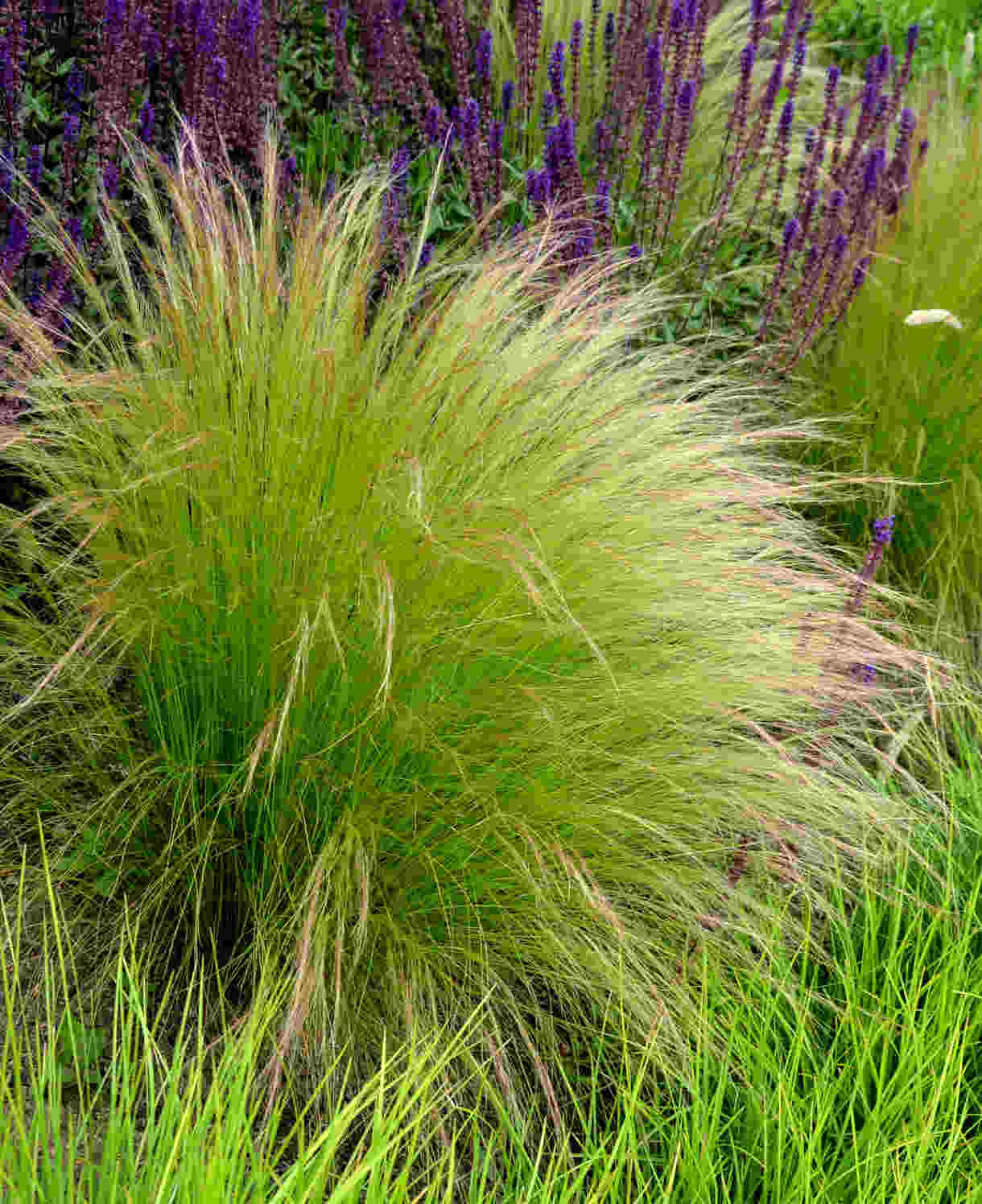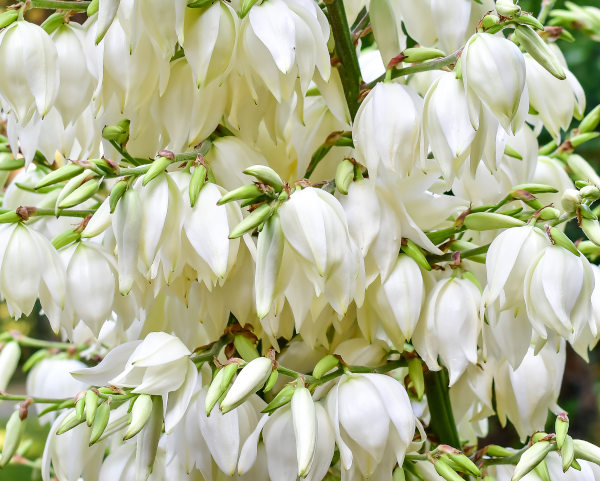How to grow Yucca
A classic plant from the 1970’s and 80’s, Yucca plants are now making a comeback. Resilient perennials, Yucca are known for their striking, sword-shaped leaves and tall, dramatic flower spikes. Over time their fabulous attributes have helped them come to represent Loyalty, Protection and Purity.
Native to the arid regions of North and Central America, where the tough fibres were used for weaving sandals and baskets, and the leaves for ceremonial occasions. Yucca are well-adapted to dry, sandy soils and require minimal water, making them a popular choice for low-maintenance gardens. There are over 40 species of yucca, ranging from the towering Joshua tree (Yucca brevifolia) to smaller, more compact varieties like the Spanish bayonet (Yucca aloifolia) and Adam's needle (Yucca filamentosa).
Yucca flowers, which bloom in late spring to summer, are white or cream-colored and bell-shaped, attracting pollinators like moths and butterflies. They’re also relatively pest-resistant and have low fertilizer needs, although a light, balanced fertilizer in spring can enhance growth. With their bold architectural form and easy-care nature, yuccas are a striking, reliable addition to any landscape, particularly in warmer, drier regions.

Zantedeschia is a genus of flowering plants from the family Araceae and is native to southern Africa. With a rich history dating back to the Ancient Romans, these deciduous or semi-evergreen perennials have been used as a symbol of celebration. Zantedeschia was Named after Professor Giovanni Zantedeschia, an Italian botanist.
There are two main forms of Zantedeschia: hardy and tender. Hardy forms of the plant can be grown outdoors, enjoy moist soil and full sun or partially shaded conditions - these are known as Arum lilies. Tender forms of Zantedeschia prefer being grown in containers or pots and should be brought inside over the winter - these are known as Calla lilies.
With tuberous flora in all colours from whites, yellows and oranges to deep reds and purples, Zantedeschias are not to be overlooked in any garden, as long as they have sufficient sunlight to grow in.
Ready to learn more about growing Zantedeschia? Read on for all there is to know...

Key Information
Soil pH
Position
Hardiness


Where & when to plant Yucca
Position - Full sun or partial shade
Soil - Sand, loam, clay or aquatic wet soil.
Flowering Period - late spring and early summer
Hardiness - H4 (-5°C to -10°C)
Hardy perennials, Yucca thrive in sunny, well-drained locations, making them ideal for dry, low-maintenance landscapes. You can plant your Yucca plants out at any time of year, but the easiest time is in spring or autumn, when temperatures are moderate, which helps them establish strong roots before extreme summer heat or winter cold. Otherwise, plant in a large, heavy pot until the time is right.
Choose a spot that receives full sun for most of the day, as yuccas perform best with ample sunlight. They can tolerate some partial shade, particularly in hotter climates, but avoid overly shaded areas, as this can lead to weaker growth and fewer blooms. Soil is another critical factor, as yuccas need well-draining soil, such as sandy or gravelly types, to prevent root rot, which they’re prone to in overly wet conditions. With minimal water and care needs, yuccas are perfect for drought-prone areas and xeriscaping.
How to plant Yucca
In the ground
- Clear the chosen area of weeds.
- Dig a planting hole several times larger than the root ball.
- Place the plant in the hole, ensuring the top of the root ball sits level with the surface of the soil. Too low and the plant may rot, too high and the roots can dry out.
- Backfill with a mix of soil and sand or grit for drainage, and firm in gently.
- Soak well with water.
- Mulch around the base.
In a container
- Choose an appropriate container, large and heavy so it is less likely to get knocked over, ensuring there are plenty of drainage holes.
- Use a Cacti or Succulent compost, or make your own with a good quality multi-purpose potting compost and mix some horticultural grit in for drainage. If not already present in the compost (check the description on the bag) some slow-release plant food.
- Start by partially filling the pot with the compost and grit mix; enough so that when placed on it the upper surface of the root ball is about 3cm lower than the top of the pot.
- Infill all the space surrounding the root ball with compost, firming down with your fingers then adding a little more so the plant is held tight.
- Pick up the pot (if you can!) and lightly tap on the potting bench or ground a few times to help further settle the compost around the plant.
- Soak well with water.
- A mulch with horticultural grit will look attractive and help to prevent a ‘cap’ or crust forming on the top of the compost (something container plants can suffer due to the artificial nature of their watering).

What to plant with Yucca
Yucca are resilient plants which grow naturally in the arid, desert climates of the American South and Mexico. Pair your Yucca with equally resilient plants that have similar soil and sunlight requirements, like Tiger Lilies, Sedum, Rudbeckia, Sage and Yarrow. These plants look beautiful next to each other and will produce a huge number of flowers during the late spring and summer.
Alternatively, light, fine textured foliage such as Ceratostigma, Coreopsis and many types of grass provide an excellent contrast with the spiky leaves and bristles of the Yucca plant, while tropical plants will create a jungle vibe.



How to care for Yucca
Pruning and Deadheading
Yucca require very little care. If the leaves turn brown, you can easily remove them by pulling. If you wish your plant to have more of a trunk you can remove more of the lower leaves.
If your Yucca gets too tall, you can saw off the top. After a while, new foliage will grow from below the cut of the main plant. You can then plant the top you have removed, to create a new plant.
Watering
Highly tolerant to drought, the soil should be well-draining, as yuccas are highly susceptible to root rot when overwatered. Once established, they require very little watering and can tolerate drought exceptionally well.
Feeding
Yucca plants don’t require a lot of fertiliser and can thrive in relatively low retile conditions. But if you want to give your plan and extra boost, apply a light feed once a month in spring and summer, this will help your plants to remain healthy. Either a granular, liquid or stake type fertiliser can be used.
Cold Protection
Yucca plants thrive in gardens to around -10°C, withstanding several degrees of frost - some species tolerating colder climates. If your plant does suffer from some frost damage, their succulent leaves will usually grow back in time.
If protection is required in a particularly cold winter or area, you can always bring container grown plants into a frost free area, or move it to an area protected by walls shielding the cold north winds. Alternatively, you could wrap your plant with blankets, bubble wrap or even a horticultural fleece, available from most garden retailers.
Pests and Diseases
Yucca do not tend to suffer from many pests and diseases, occasionally spider mite and aphids, but both are easily treated.
How to propagate Yucca
By cutting - the easiest way to propagate a yucca plant is to cut off an offset (also known as pups).
Strip off the lower leaves to prevent the amount of moisture loss, and leave it for a few days for the wound to dry out.
Plant each one into a pot of cacti and succulent mix and water well.
Keep the soil moist for a few weeks.
The roots will form relatively quickly, around a month, then change watering schedule to weekly.
Leave to grow on in a light place out of direct sunlight.
By seed – it can take years for each to reach specimen size.
Once the seed from the flowers is collected, ‘scar’ the coating of each one by rubbing lightly with sandpaper or a file.
Plant the seeds in a well-draining compost or cactus mix, at a depth of twice the seed length.
Water and place in a warm, sunny position.
In 1-2 week seedling should start to appear. These can be transplanted into larger pots as they grow.
Common Yucca questions
The leaves on my Yucca are turning yellow
Yellow leaves are often the sign of a problem with the care of your plant – possibly shortage of water, too little light, sunburn, waterlogging, or the natural process of leaves falling.
Yucca leaves with brown tips is usually a sign of suffering from dry and hot air, often during winter when they are grown in a heated home.
My Yucca plant isn’t flowering
Flowers are not usually first produced by Yucca plants until they are at least 6 years old, sometimes older, and then they are not produced every year. To try and encourage further flowers, remove the finished flower stem.
Can Yucca be grown indoors too?
Yes, in a large pot that will not tip over as the plant gets bigger and top heavy. The important thing to remember with growing Yucca indoors is to make sure the soil is well-drained and that water can perculate through easily. Place in a sunny spot out of the heat of direct midday sun.





